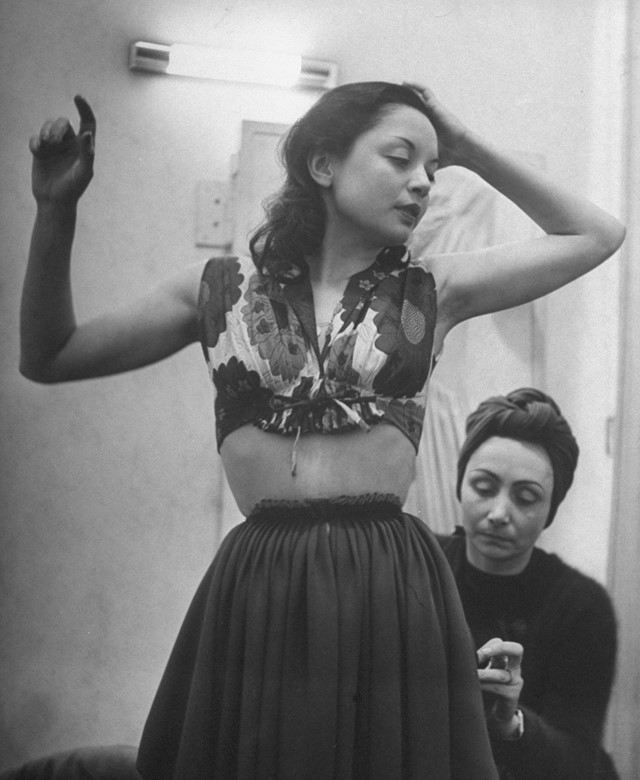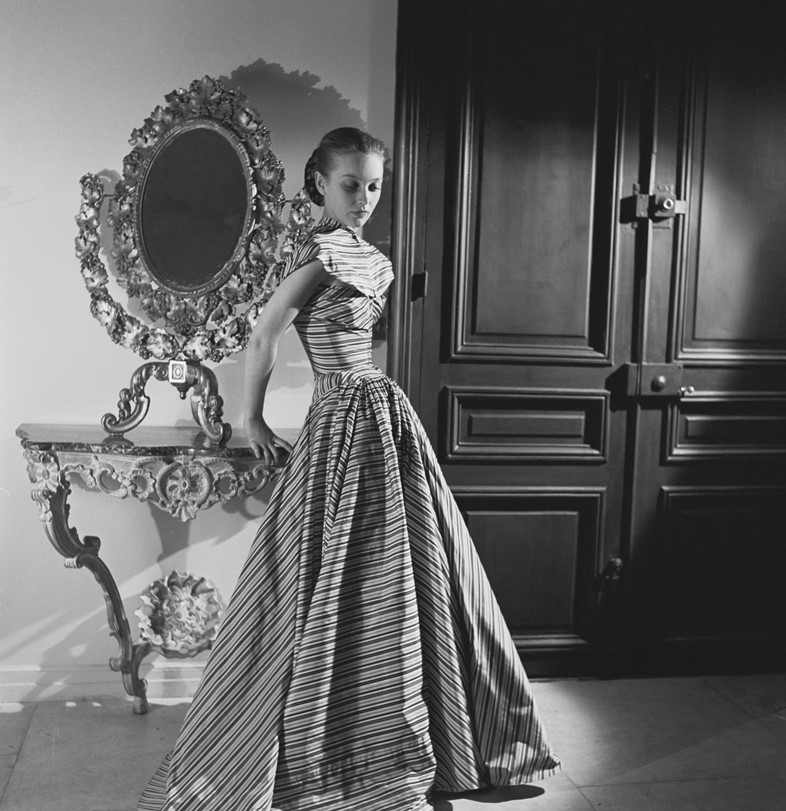Madame Grès’ simple elegance would go on to influence generations of designers, from Azzedine Alaïa to Yohji Yamamoto, and continues to resonate today
Madame Grès, the French couturier who was a formally trained sculptor, was not like other Parisian haute couture dressmakers. With meticulous pleats and folds, she created dresses that mimicked the softly draped gowns carved in stone in ancient Greco-Roman sculpture. She spent her six-decades-long career honing a dedication to pleats and draping, which would become her signature style.
Grès did not cut patterns, but instead hung and draped fabric over live models rather than mannequins, to ensure movement was fluid and comfortable and that the creation enhanced an individual’s silhouette. Her keen study of the body attracted the adoration of designers like Azzedine Alaïa, Yohji Yamamoto and Haider Ackermann, and 1990s pioneers of contemporary minimalism Calvin Klein and Jil Sander. As Madame herself stated in 1976: “Simplicity and elegance are never boring: you can never get enough of them, and one single detail manages to suggest that touch of gaiety only you have!”
Marlene Dietrich, Jackie Kennedy, Grace Kelly, Wallis Simpson and Edith Piaf all wore her designs. In fact, when the contents of the Duke and Duchess of Windsor’s Paris villa was auctioned off in 1998, gowns made by Madame Grès were part of the lot, alongside a box containing a tiny sliver of the couple’s wedding cake, which sold for $29,900.
It was the 2011 exhibition Madame Grès: Couture at Work, that catapulted Grès back into the fashion industry’s consciousness. Her dresses were presented in modern oak and glass cases against the backdrop of the Musée Bourdelle’s mammoth yet muted sculptures cast in plaster and bronze. It was disorientating, but in a good way, emphasising the timelessness of her shapes. A pleated Grecian number in tangerine could have passed for 1970s Halston, or even 1990s Versace. The more blousy draping had echoes of Phoebe Philo at Chloé. Just last month Olivier Saillard worked with Martine Lenoir, a former dressmaker at Grès, to work her trademark pleats into reconstructed vintage white and lilac T-shirts, picked up for $5. The creations are modern, refreshing, and covetable.

Seminal Moments
In 1941, during the Nazi occupation of France, Germany started rationing textiles as part of a continuing bid to destabilise the Paris fashion industry and transfer the city’s finest couturiers to Berlin. Leather, for example, was entirely jettisoned and reallocated for use on German army boots; Parisians were left wearing shoes of rubber or raffia with wooden soles. Customers could only buy couture with special rationing cards, which were distributed to a measly total of 200 German women and 19,015 French women. In 1944, after flouting the Nazi’s fabric restrictions, Madame Grès, along with the likes of Cristóbal Balenciaga, was forced to shut up shop.
When she reopened in 1944, she did so with a defiantly French window display of blue, red and white. Grès embodied the spirit in Paris at that time, believing that elegant clothing was not a trivial indulgence, but a wartime necessity that could lighten the roughness of life.
Defining Features
“Grès abhorred trends and very firmly placed herself outside of the fashions that were popular during her career,” Karen van Godtsenhoven, curator of an exhibition of Grès’ work at MoMu, Fashion Museum Antwerp told AnOther in 2012. “Christian Dior’s New Look or Gabrielle Chanel’s modern cuts were a world of difference compared to Grès’ classical sources of inspiration and intense methods of working,” Van Godtsenhoven explained.
Madame Grès’ infamous need for privacy was fierce, and she changed her name numerous times throughout her life. Born Germaine Émilie Krebs, she was also known as Alix Barton or simply ‘Alix’. She purposely mislead journalists about her date and place of birth, and the press didn’t even know she’d died until her only daughter reported it a full year later, in 1994. Grès could, however, be easily identified by her trademark turban, which she wore tied high, hair tucked out of sight, forehead prominent. Edith ‘Little Edie’ Bouvier Beale favoured a similar look in later life, though worn somewhat less elegantly. It was a style that many Parisian women adopted during WWII to conceal their unwashed hair, but for Grès it was a look that stuck.

She’s an AnOther Woman Because...
Madame Grès’ lifetime commitment to perfecting and elevating two techniques completely contradicts the current culture of fast-paced, instant gratification which is so easy to fall into. Perhaps that’s why her elegant workmanship is especially refreshing today. Look a little closer and you’ll see her legacy all around you; she continues to inspire new generations of designers to demand clothes that follow the movement of a real, living body without compromising on the intricate detailing of an haute couture gown. As auctioneer and vintage fashion authority Kerry Taylor wrote in book Vintage Fashion & Couture: From Poiret To McQueen: “No self-respecting fashion museum should be without a signature Grecian-style gown.”
